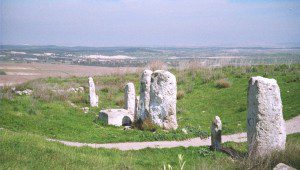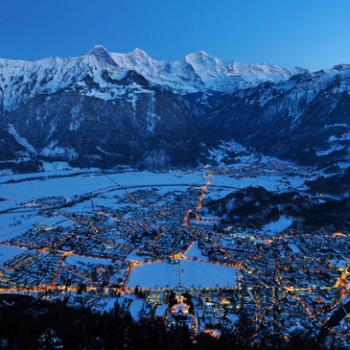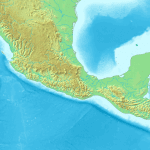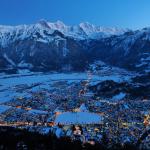
(Click to enlarge.)
A relatively brief article (“Commemorating a Covenant”) in the January/February 2015 issue of the Biblical Archaeology Review summarizes archaeologist William Dever’s final excavation report on his field work at Tel Gezer, which he completed more than forty years ago. (For a map showing Gezer’s location in north central Israel, see here.)
Such a time lag between excavation and final published report is a continuing problem in archaeology. Analysis and writing take much longer than simple digging does.
One of the most striking features of the site at Gezer is what’s been called the “high place.” Ten uninscribed monolithic stones, ranging between six and eleven feet in height, stand beside a massive square basin.
Since the original excavations at Gezer of the Irish archaeologist R. A. S. Macalister between 1902 and 1907 (which Dever, who is famously frank, plainly considers quite incompetently done and analyzed), writers have speculated that the place was a site for human sacrifice, or a memorial to a prominent dead person, or a marker for a shrine, or a monument to some important (possibly theophanic) event.
Dever argues that the Gezer “high place,” which he dates to between 1650 and 1500 BC — in other words, to about five hundred years before Israel’s appearance in Palestine — commemorates a a covenant or a contract between ten towns or ethnic groups.
The standing stones, he argues, were massebot (singular massebah) of the same kind that the Bible mentions from later, Israelite, history. In Deuteronomy 27:2-8, for example, a massebah is erected to commemorate Moses’ covenant with the Hebrew people. In Exodus 24, Moses sets up twelve massebot to commemorate God’s covenant with the twelve tribes of Israel.
Covenant is a very old idea. It was central to ancient Israel as it was to the wider world in which ancient Israel lived, and covenants are absolutely central in Mormonism. Curiously, significant strains of the Christian tradition seem essentially to have lost the concept.
We don’t visit Tel Gezer during the tours that we lead to Israel, but we always drive by it and point it out. Join us!











